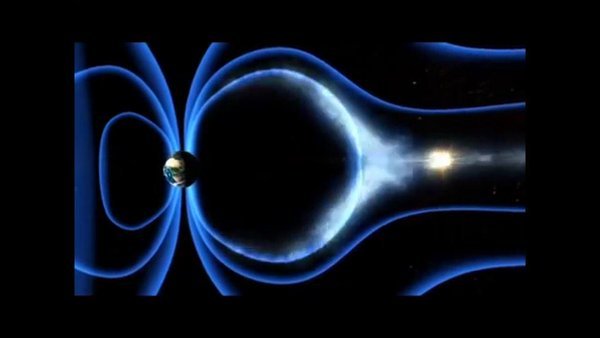With latest data, Drake Equation is getting really useful.

The Drake Equation seeks to establish the probability of alien (off-world) sentient life. Here’s the equation with N equaling the number of intelligent alien species:
Well, that equation is pretty useless, because we can’t begin to put a number on some of the parameters. However, some clever boffins decided to change the question a little, and that makes a big difference:
Standard astrobiological discussions of intelligent life focus on how many technological species currently exist with which we might communicate (Vakoch and Dowd, 2015). But rather than asking whether we are now alone, we ask whether we are the only technological species that has ever arisen. Such an approach allows us to set limits on what might be called the ‘‘cosmic archaeological question’’: How often in the history of the Universe has evolution ever led to a technological species, whether short- or long-lived? As we shall show, providing constraints on an answer to this question has profound philosophical and practical implications. “A New Empirical Constraint on the Prevalence of Technological Species in the Universe”
Throwing out the term L, the life expectancy of species, was a good first step; asking not “do they exist now” but “did an advanced technological civilization ever exist”. But what they do next is really clever. They group three terms that have to do with how many planets exits in the habitable zone (R*, fp, and ne) into one term, Nast. Then they gather into a second term, fbt, all variables dealing with whether an intelligent species would emerge (fl, fi and fc ). Substituting A, the number of intelligent civilizations that have ever lived, for N in the original Drake Equation (the number of intelligent alien civilizations that exist now) gives:
A = Nast * fbt
Nast can be estimated based on recent rapid advances in our current knowledge of the cosmos. It’s a very big number—the authors give an estimate of 4 x 1021. Because there’s life here on Earth, we can set A (the number of intelligent species) to one and voila:
A = Nast * fbt
1 = 4 x 1021 * fbt
fbt = 2.5 x 10-22
(The authors use A = 0.01 for the number of civilizations, so they calculate fbt = 2.5 x 10-24-. We know A = 1, so it doesn’t make much sense to me to use 0.01. They are in essence estimating fbt and using it improperly in this context. I'll use their numbers hereafter)
So what does that lovey number tell us? That the chance of intelligent life emerging on a perfectly perfect world has to be less than 2.5 x 10-24 for earth to be the only planet to give rise to an intelligent species. If it is more probably than that there are, or at least were, other intelligence races running around the Universe. For the Milky Way Galaxy, the number is fbt = 1.7 x 10-11. That’s around one in 60 billion. Is fbt less than one in 60 billion? Not likely by my lights.
Off Into the Wild-Blue Yonder
The authors note that the fbt parameters are extremely speculative. The three parameters are fl (the fraction of those planets that develop life), fi (the fraction of planets bearing life on which intelligent, civilized life has emerged), and fc (the fraction of these civilizations that have developed communications technologies that release detectable signs into space). Some simplifying assumptions can be made about these parameters.
First, panspermia is the theory that life on one planet can seed life on other planets. I wrote about it recently on a blog post The Death of Darwinism Part I: Behe’s 2nd and Joseph Too:
Micronauts; Lots and Lots of Micronauts.
The Earth could, and probably does, leave a long tail of life in its wake. Electromagnetic/magnetic fields could eject charged bacteria into outer space by the ton every day! Electrified bugs soar into space and infest the galaxy. The author suggests that a single life-bearing planet could seed the entire galaxy, probably within a few (or few tens of) million years. A first step will be to find signs of life on Mars.
In the 1970's Chranda Wickramasinghe determined that certain absorbtion spectra indicated that much cosmic 'dust' was consistent with desiccated bacteria. Although roundly ridiculed at the time, his findings have become conventional wisdom. From Wiki "From the early 1970s it was becoming evident that interstellar dust consisted of a large component of organic molecules."
So, assuming panspermia, fl (the fraction of those planets that develop life) would probably approach unity.
As to the other two parameters in fbt, I think they should be changed to two substitute terms. The first would be whether, given life exists on habitable planets via panspermia, does animal life emerge (fa), and, if it does, would it develop sufficient intelligence (fsi) to build a civilization.
Many planets may be like Venus and Mars—arguably within the habitable zone, but in truth unable to support a homegrown civilization. But would an earth-like planet with life emerging by panspermia and given time, develop a civilization?
I’d give that a near one too. I’m pretty sure panspermia is correct, which would result in life (fl). I think of DNA as terra-forming, eco-system building, highly-advanced nanotechnology, which would result in ecosystems with high-functioning animals (fa). Finally, consciousness and ‘intelligence’ go hand-and-hand, and I think consciousness is non-local, (see, e.g., Consciousness Beyond Life by Pim Van Lommel, M.D. ), so it would be bestowed on any sufficiently advanced creature (fsi).

Wow! We must have a lot of cousins out there! Thanks, Dr. Drake.
RedQ
P.S. Subscripts don't work here at Steemit. Tough lesson to learn. Laborious to put in just to have to take them out!

